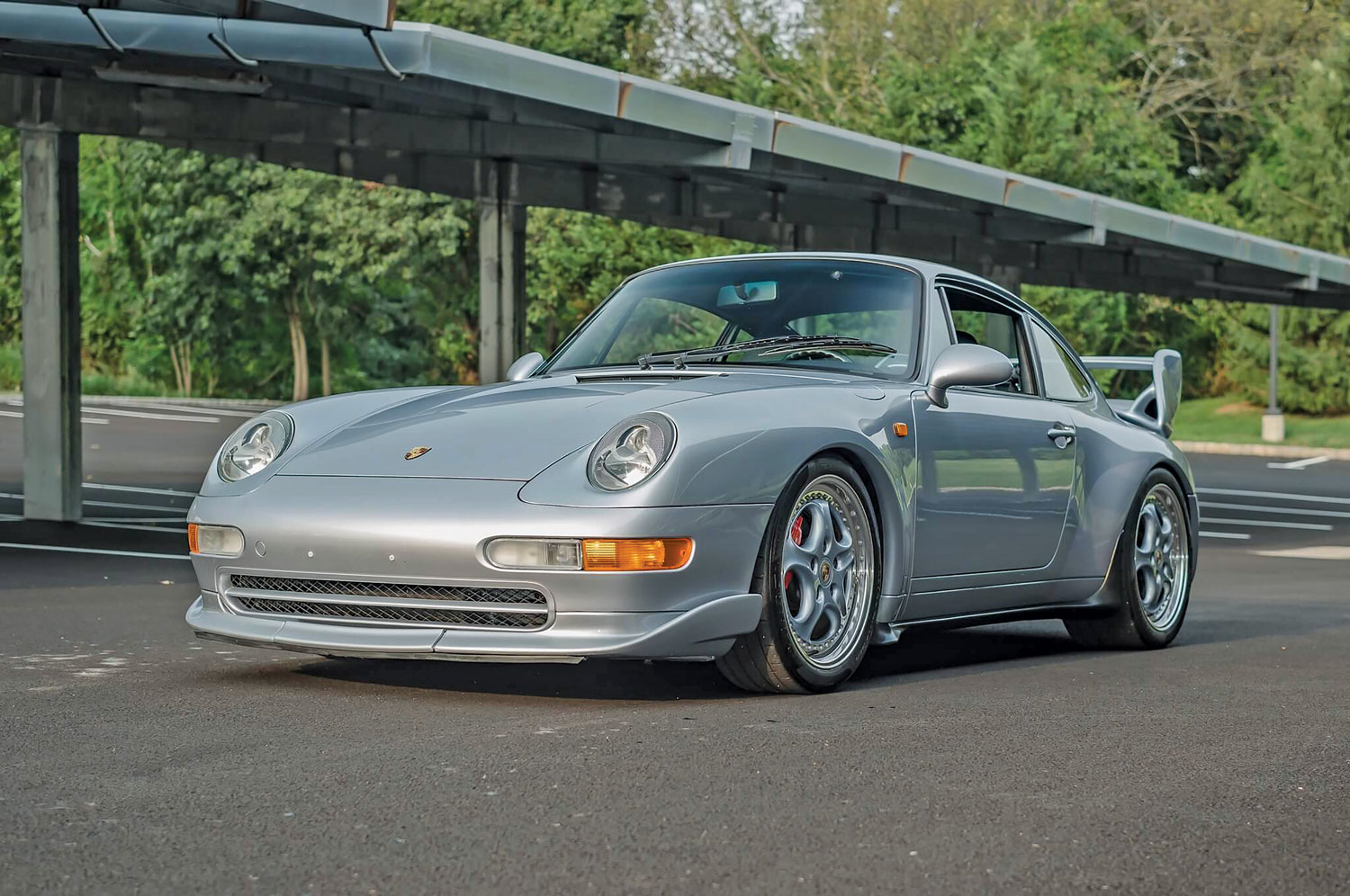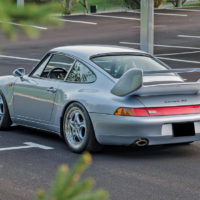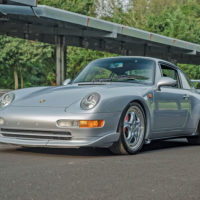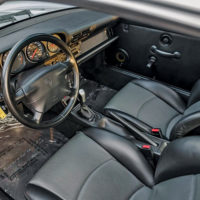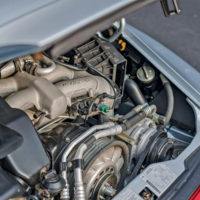SCM Analysis
Detailing
| Vehicle: | 1995 Porsche 911 Carrera RS |
| Years Produced: | 1995 (some registered as ’96) |
| Number Produced: | 1,014 |
| SCM Valuation: | $328,000 |
| Tune Up Cost: | $2,800 (with plugs, filters, fluids), $5,000 (adds plug wires, distributor) |
| Chassis Number Location: | Stamping in trunk above spare tire, label on driver’s side inner front fender, and tag at base of windshield |
| Engine Number Location: | Stamped on the right-facing fan support of the engine case |
| Club Info: | Porsche Club of America |
| Website: | http://www.pca.org |
| Alternatives: | 1992 Porsche 911 Carrera RS, 1995 BMW M3 Lightweight, 1999 Ferrari F355 Serie Fiorano |
| Investment Grade: | B |
This car, Lot V-0012943, sold for $360,000, including buyer’s premium, on PCarMarket’s online auction on September 27, 2021.
Your correspondent is a big fan of 993-series 911 Carrera RSs, having owned two and having sold a couple dozen to friends and associates (including this car). They were the sixth RS variant in what is now a long lineage of 911 Carrera RS models. It was not always so.
Rennsport origins
The run started with the legendary 1973 Carrera RS, built 1,525 strong in two models, 200 M471 Lightweight versions, homologation specials, and 1,308 M472 Touring versions. Also included were 55 M491 RSRs, purebred Group 4 race cars for which the RS was the homologation base. Of interest, the RS itself was homologated as a Group 3 race car once 1,000 had been built.
Porsche moved the bar up in 1974 with the second RS, actually a race car for the street, the hugely accomplished G-body RS 3.0-liter. Built in just 52 units to homologate the updated RSR, that RS was raw and raucous.
The RS model line then went fallow until 1984, when Juergen Barth’s Customer Racing Department launched the SC/RS to provide rally cars to David Richards’ Autosports (later renamed Prodrive). Some 21 cars were built, in either “rally” or “strasse” trim. Many aficionados consider the SC/RS to be the ultimate RS. It is very light, nimble and quick — a hugely rewarding car to drive fast.
In 1987, we bought the remaining SC/RSs from David Richards. He was headquartered at Silverstone in those days, and we took chassis 008 out for a spin. With a hand-held stopwatch, we repeatedly did 0–100-0 mph in 10 seconds, and the gearing necessitated three upshifts. It was all about the power-to-weight ratio.
Let’s sell some cars
By the early 1990s, Porsche realized that the last time it prospered from an RS model was in 1973, so a new RS was designed for public sale. The 1992 964-series Carrera RS ensued and was a big marketplace success, but not in North America, where Porsche chose to not go through the emissions certification and crash-testing process.
Porsche built and sold an impressive 2,279 of these cars, including 1,913 Basics (aka Lightweights), 290 N/GTs for racing in BPR and ADAC series, and belatedly, 76 Tourings with full interiors, sound deadening, usually a/c, and sometimes even a sunroof. All of them are very collectible today.
In 1993, the “big bear” RS 3.8-liter was built, just 55 of them, to be the homologation model for the RSR race car. A fabulous — if really raw — road car, they are quite valuable.
Attempting to follow one success with another, Porsche introduced the 993 Carrera RS as a 1995–96 model, also not legal in North America. All were built before December 31, 1995, so they did not have OBDII emissions controls, although the serial numbers mostly read as 1996 models. That nuance messed up more than one would-be 993 RS importer back before the cars became old enough to bypass EPA and DOT strictures. Although it had been just four years since the 964 RS, Porsche sold 1,014 993 Carrera RS models: 226 stripped-down Club Sports, and 788 “strasse” versions.
Special and thoroughly usable
The 993-series Carrera RS is a capable road car, about 200–240 pounds lighter than a C2/C2S. It is the first car with Porsche’s VarioRam induction system, and it makes good torque and more power than the advertised 300 hp from its 3.8-liter engine. The cars are fine drivers that often came with creature comforts, especially a/c.
We took ours from Bend, OR, to Rennsport VI at Laguna Seca in 2018, driving through lots of Northern California on the way. After 2,800 km on the road, my wife Pam said, “Honey, I really like this car. Let’s keep it a long time.” In our 964 RS, we were always worn out after 200 miles.
After the 993 RS, progress slowed again until 2004. The 996 version was a homologation car, the first GT3 RS. Porsche built 683 of them, none being importable to North America at the time. They are fine cars in the mode of the 1974 RS and the 1984 SC/RS.
The “modern-day” RSs
Still later, knowing a good thing when they see it, Porsche brought back the RS moniker with the 2007–08 997.1 GT3 RS 3.6-liter, 2010–11 997.2 RS 3.8-liter, 2011 GT3 RS 4.0-liter, 2016 991.1 GT3 RS, and 2019 991.2 GT3 RS models. The first three were of the 997-series and had smallish build numbers of 1,169, 1,500 and 600, respectively. For the 2016 and 2019, production numbered 4,520 and 4,750 respectively. This is leading many collectors to prefer the smaller, lighter, more-responsive 997s, which also have fewer automated driver aids. With the lower build quantities, they are probably also better longer-term investments.
If you’re an RS fan and are thinking about building a full run of RSs, you also have to include the speed-demon GT2 RSs produced in 2011 and 2018. One good friend had to have absolutely all the RSs, so he also added a 968 Turbo RS, one of four ever built.
A well-bought example
The 993 Carrera RS sold on PCarMarket was originally a German delivery that sold in 2006 through Thomas Schmitz. It was the very first car this premier German dealer sold to the U.S. The buyer was RS aficionado Joe Barnes of Scottsdale, AZ, who kept the car a year or so before moving on to an example in a preferred paint color with Sport Buckets.
Then SCM contributor Steve Serio bought it, sold it on to a SoCal dealer, who sold it to a well-known Porsche collector, also in Scottsdale. In 2016, the buyer asked me to sell it and replace it with a 993 Carrera RS Club Sport. We sold this RS to a Porsche enthusiast doctor in Tulsa, who later placed it on consignment with C.J. Wilson’s Porsche of Fresno dealership.
For about the past 18 months, it was owned by Chris Turner of Lamborghini of Paramus, NJ. It was for sale at his store for $395,000, then $375,000, and then consigned to PCarMarket.
When we knew the car, it was a fine example and very original. This auction did not show the engine or gearbox numbers or mention that they were original matching numbers to the build sheet (which we have). The car might have been slightly held back by a more-common paint color, Polar Silver, and “big butt” seats, not the preferred Sport Buckets that are in most 993 RSs. Lastly, there was some confusion over a possible mileage discrepancy. Still, in my opinion, the car was well bought. ♦
(Introductory description courtesy of PCarMarket.)
